- Home
- Winston Groom
1942: The Year That Tried Men's Souls Page 12
1942: The Year That Tried Men's Souls Read online
Page 12
Having noted this, it is also quite possible that nothing would have become of it anyway, even if the message had arrived hours before the Japanese warplanes. All that Marshall’s message told the Hawaiian commanders was that the Japanese were breaking off relations and that the Japanese ambassador had been instructed to deliver this news to the U.S. State Department at one P.M. Washington time. They were told to make of that time frame what they would.
It did not, of course, say anything like: “The War and Navy Departments have reliable information that six aircraft carriers of the Japanese fleet are planning to launch a surprise attack with 350 planes from 200 miles due north of Oahu on the U.S. ships and airfields in and around Pearl Harbor at 8 A.M., your time. Be prepared.” If it had, and if such a message had been received in a timely fashion, things undoubtedly would have turned out somewhat differently. But of course it could not have, because nobody in the U.S. government knew these terrible things.
Furthermore, Marshall could simply have picked up the telephone in his office and said to Short something cryptic, such as, “I hope you and Admiral Kimmel are on full alert now.” The fact that army security officials did not consider the telephone a secure form of communication, even if equipped with a scrambler, probably discouraged Marshall from doing this. It is a pity that he didn’t.
Finally, of course, there was the warning of the two army privates manning the mobile radar station at the northern tip of Oahu that morning. Their duty consisted of plotting aerial movements from four A.M. until seven A.M. Radar was a new technology then, and not well understood, but somebody should have figured out that if the Japanese launched planes from carriers two hundred miles away at dawn, they would not reach the outward span of northern Oahu’s radar until after seven A.M.
Nevertheless, by a fluke the two privates did in fact pick up the Japanese inbound flight and they reported it. The radar plotters back at the army base, however, had all gone to breakfast by that time, leaving only the unfortunate and inexperienced lieutenant on duty, who assumed that what the radar was seeing was the expected flight of B-17s from the West Coast and told them to “forget about it.” More unfortunately, the two privates did not specify to the lieutenant just how many planes they were seeing, only “a big flight” of them. If they had said they were picking up fifty or more, it might have given the lieutenant pause, for he likely would have known that there were only twelve of the B-17s scheduled to arrive. In the event, they did not specify, and we will never know what might have happened if an alert had been sounded at that time.
There has been a school of thought almost from the beginning—which in fact continues today—that holds President Franklin D. Roosevelt, in varying degrees, culpable for the disaster at Pearl Harbor. This theory invariably begins with the notion that Roosevelt wanted war with Japan in order also to draw the United States into a war with Germany. The theory goes on to cite Roosevelt’s provocative embargo on U.S. oil sales to Japan, which forced them into attacking the United States.
From there it proceeds to the strained conclusion that Roosevelt had, through U.S. intelligence sources, gained positive knowledge that the Japanese were going to attack Pearl Harbor, the Philippines, and other U.S. territories in the Pacific. Some even assert that Roosevelt knew the date and time of the attack, but had ordered this critical information withheld from the Pacific commands. This was because he wanted Japan to strike the first blow, so as to enrage the American people to such a vengeful frenzy that there would be no question of isolationists or America Firsters raising any opposition to entering the war.
Among those who subscribed to this theory, in greater or lesser degrees, were a few admirals, captains, and other high-ranking naval officers, as well as the distinguished historian John Toland, who reached this conclusion late in his career. Others have published similar books over the years, painstakingly parsing bits of information from documents long moldering in the bowels of World War II records centers and from other sources, some dubious, some valid.
Superficially, a case might be made for some of their hypotheses. It is certainly true that Roosevelt believed the United States should enter the war. The Axis was both despicable and a real menace and, if victorious, would certainly pose a great peril to the United States and the Western Hemisphere. That Roosevelt actually wanted war is a different thing; no president in his right mind wants war, but seeing the inevitable hazards of a world ruled by dictators the likes of Hitler, Mussolini, and Tojo, Roosevelt was keenly aware that America’s best interests—indeed, her very survival—lay in defeating these malignant and bloodthirsty despots. In possessing this awareness he can hardly be faulted.
Almost all of what professor Gordon Prange, a preeminent Pearl Harbor historian, called “revisionist” histories cite Roosevelt’s instructions to “let Japan strike the first blow” as proof that he in fact wanted the Japanese to achieve a surprise attack on the U.S. fleet at Pearl Harbor. But any sensible reading of the context of Roosevelt’s order reveals that what the president was trying to convey to his Pacific commanders was that the United States should not attack the Japanese first, before war was declared by either side. The notion that America should let Japan strike first indicates to the revisionists that Roosevelt knew the Japanese would attack without a declaration of war. He did not know this (as the evidence suggests) but of course he suspected it, given the nation’s behavior ever since the Russo-Japanese War of 1904—05, and so did the Washington military command, evidenced by the various warnings they sent out all over the Pacific.
In short, to follow all the arguments suggesting that Roosevelt conspired to let the Pacific command be surreptitiously attacked by the empire of Japan is exceedingly tedious and in the end wasteful of effort because it defies simple logic* First, such a conspiracy would have to involve not only Roosevelt but his two top military commanders, Marshall and Stark, as well as their intelligence and planning staffs, plus probably the secretary of war, Henry Stimson, and Secretary of State Hull, all of whom were receiving daily intelligence materials from MAGIC. Anybody who has worked the political game in Washington knows that such a shocking and widspread conspiracy would be absolutely impossible to keep secret for very long.
Second, Roosevelt, himself a former assistant secretary of the navy during World War I, was perhaps the nation’s foremost champion of the sailors and great ships that constitute the United States Navy. He was then, and has been since, accused of many devious things—and many of the accusations stick—but the idea that Roosevelt would willfully allow all those ships to be sunk and all those sailors, soldiers, and marines to be killed is a notion too monstrous to entertain seriously.
Finally, along the same line, even assuming that Roosevelt had somehow known about a pending Japanese attack on Pearl Harbor, it flies in the face of reason that he would have singly “let it happen,” and permitted his main naval battle force to be destroyed just as war was breaking out. At the very least he would have made absolutely sure that the Pacific commanders were alerted in such a fashion that they would be ready and waiting for the Japanese when they arrived, and shot down their planes and sunk their ships. Clearly, anything otherwise would have been, simply, idiotic. The American public would have been just as outraged and eager for revenge upon learning that the Japanese had attempted and failed at a sneak attack as they were when they learned it had been successful.
December 8, 1941, broke dark and blustery in Washington, and the mood of the American people matched the weather. Military recruiting stations had long lines out in front almost from the crack of dawn. The young men who signed up all over the country were treated to speeches similar to this one from a marine recruiting sergeant in New York: “Where you are going it will not be easy. When you get to Parris Island you will find things plenty different from civilian life. You won’t like it! You’ll think they’re overdoing things. You’ll think they’re stupid! You’ll think they’re the crudest, rottenest bunch of men you ever ran into! I’m going to tell
you one thing. You’ll be wrong! If you want to save yourself plenty of heartache, you’ll listen to me right now: you’ll do everything they tell you and you’ll keep your big mouths shut!”9
That same morning Archibald MacLeish, the Librarian of Congress, ordered the originals of the U.S. Constitution, Declaration of Independence, Bill of Rights, Magna Carta, and the Gutenberg Bible packaged up and sent by armed guard railroad to the underground safes at Fort Knox, Kentucky, where the U.S. gold reserve was stored. At 12:30 President Roosevelt entered the House chamber for a joint session of Congress.* Wearing a black armband, he shuffled slowly and deliberately to the rostrum on the arm of his son Jimmy, a marine officer.†
The galleries upstairs were packed with dignitaries, including Mrs. Woodrow Wilson, wife of the previous wartime president. Then into the chamber filed the justices of the Supreme Court, wearing their robes with black armbands also affixed. The silence was absolute when Roosevelt began to speak. Millions heard him over the radio.
Yesterday, December 7, 1941—a date which will live in infamy—the United States of America was suddenly and deliberately attacked by naval and air forces of the Empire of Japan.
The United States was at peace with that nation, and, at the solicitation of Japan, was still in conversations with its government and its Emperor looking toward the maintenance of peace in the Pacific.
The president pointed out that given the distance from Japan to Hawaii and the magnitude of the assault it was obvious the Japanese had been planning it for a long while, and he went on to tell of the many lives lost and ships damaged. Then he gave the American people further news, which had come in overnight.
Yesterday, the Japanese government also launched an attack against Malaya.
Last night Japanese forces attacked Hong Kong.
Last night Japanese forces attacked Guam.
Last night Japanese forces attacked the Philippine Islands.
Last night Japanese forces attacked Wake Island.
Last night Japanese forces attacked Midway Island.
Roosevelt proceeded to describe the “great danger” emanating from the attacks but expressed confidence in ultimate victory, then concluded:
I ask that the Congress declare that since the unprovoked and dastardly attack by Japan on Sunday, December 7, a state of war has existed between the United States and the Japanese Empire.
The speech took less than five minutes and when the president had finished the House chamber erupted with applause, shouting, foot stamping, and fist shaking. It was done. Both House and Senate voted unanimously for the declaration of war, with one dissent.*
Next day Adolf Hitler foolishly declared war on the United States, followed by his stooge Mussolini.† Isolationism and the America Firsters vanished overnight. To show their solidarity, isolationist congressmen and senators walked about the Capitol corridors arm in arm with their interventionist counterparts, while the people of the city, and elsewhere, went around in a kind of daze, the conflagration enveloping the entire globe now reeling in their minds. For nearly a year they had known the thing was there and had groped to make out its form and nature and to comprehend how it came to be and have so much power. Now they saw it clearly for the first time. It was a true world war now, and America was in it to the hilt.
Back in Hawaii, General Short and Admiral Kimmel had been fired, with Roosevelt’s approval, by the secretaries of the army and the navy, respectively, and accusations of dereliction of duty were hurled at them. As an interim commander of the fleet for the next couple of weeks Vice Admiral William S. Pye was selected. Pye’s title had been commander of battleships, Pacific Fleet, but after the attack he suddenly found himself to be a man without a job. It was a fateful choice because Pye, as a battleship man with little understanding of aircraft carrier warfare, would be hard put to make strong, decisive choices in the immediate days to come.
After he left Hawaii, General Short simply retired to Texas where he spent his time growing roses in the backyard of his surburban home in Houston, but Admiral Kimmel, until his dying day, went around like the Ancient Mariner, telling his story to anyone who would listen. As a permanant replacement for Kimmel as commander of the U.S. Pacific Fleet—or what was left of it—Roosevelt selected fifty-six-year-old Admiral Chester W. Nimitz, who was presently chief of the navy’s Bureau of Navigation. Nimitz had graduated from the Naval Academy in 1905 and served aboard submarines and cruisers, but his staffing and organizational abilities soon became paramount to his career.
Nimitz arrived in Hawaii on Christmas Day while the bodies of sailors were still being fished from the oil-soiled waters of Pearl Harbor, on his way to becoming “the most accessible, considerate and beloved of fleet commanders.” A man of “cheerful yesterdays and confident tomorrows,” was how his Naval Academy yearbook had pictured him. A native of Fredericksburg, Texas, Nimitz was a trim, medium-sized man with piercing blue eyes and a shock of blond hair going white, who endeared himself to Kimmel’s shattered staff when he told them upon arrival that he had confidence in them, and intended to make no changes. According to Dr. Samuel Eliot Morison, official U.S. Navy historian of the war, Nimitz had “an almost impeccable judgment of men, and a genius for making prompt, firm decisions.” This was fortunate, too, for in the days ahead many strained decisions would fall upon him.10
After he was told of his appointment, Nimitz was congratulated by his wife for “getting the fleet,” to which he is said to have replied, “The fleet, dear, is at the bottom of the ocean.”
Chapter Seven
Pleasant surprises would not overtake the American and Allied forces in the weeks and months to come. From the moment of the Pearl Harbor attack, dramas great and small began being played out as the Japanese swarmed across the Pacific and Far East like a biblical plague of locusts. Each conquest went according to plan, except one: a nasty little episode that arose on the Japanese fleet’s homeward journey from Hawaii, and which also inspired the American people with a short-lived glimmer of exhilaration. Admiral Nagumo had dispatched two of his carriers and a cruiser division from the Pearl strike force to fall upon tiny Wake Island, which the United States was busily fortifying as a mid-ocean aviation outpost.
Wake had been discovered by the Spanish explorer Alvaro de Mendana in 1568, by accident, while he was desperately searching for any island that contained water. Wake, the Spaniards found, was “destitute of water and bare of every living thing except sea-birds and a few stunted shrubs.” They christened it San Francisco and sailed away “in bitter disappointment,”1 and Wake remained a speck on the lonely ocean, literally a thousand miles from nowhere.
Two hundred and twenty-odd years later a British exploration came across the island and didn’t even bother to stop, but renamed it on their maps Wake, after their captain. All they could see was a low bleak atoll, the remnant of a sunken volcano, about five miles long and four wide with a big lagoon in the middle. In all, Wake has only about two square miles of usable land. Another hundred years passed before an American naval officer happened on it in 1899, rowed ashore, ran up an American flag, and claimed it as a U.S. possession on the theory that someday it might become useful. This proved to be so when it was decreed a bird sanctuary by Teddy Roosevelt. Some years later, in 1935, Pan American Airways established an overnight refueling station on Wake Island for its famous weekly China Clippers, the big flying boats, which could land in the lagoon. They even built a small modern hotel and dining hall for passengers as well as a hospital.*2
By the autumn of 1941 the picture at Wake had changed dramatically. In addition to Pan Am, there were now some twelve hundred civilians on the island, building an airstrip and other facilities for the U.S. military. In addition there was a 449-man detachment from the First Marine Defense Battalion. These defense battalions were a new animal in the Marine Corps. They were designed for just the sort of duty they were getting—defending the small, isolated military outposts scattered across the Pacific and the Panama Canal. Unfortu
nately, the First Battalion had left nearly half of its 850-man strength behind in Pearl Harbor with orders to catch up later. But the 449-man detachment brought with it several batteries of modern three-inch antiaircraft guns as well as several batteries of World War I—era five-inch cannons, which had been stripped from obsolete battleships to be turned into shore defenses against surface ship attacks.
The plan was that once the large runways were finished, Wake would be an early warning outpost at the edge of America’s Pacific Sea Frontier, with patrol planes fanning out in all directions to keep an eye on the Japanese. But until then the only U.S. planes at Wake were a marine squadron of twelve F4F Grumman Wildcat fighter planes, which had been delivered only four days before the attack on Pearl Harbor by carriers from Admiral Halsey’s carrier fleet. (Incidentally, this was the reason the U.S. carriers were not at Pearl when the Japanese attacked, one of the few strokes of American good luck on that black day.)3
The marines were under the command of (then) Major James P. S. Devereux and he worked them fiercely day and night setting up defenses. During the time leading up to the outbreak of war all sorts of people passed through on the Pan Am Clippers: generals, ambassadors, a family of Jews trying to escape the Germans and get to America, even the Japanese “special envoy,” Saburo Kurusu, stopped at Wake on his way to the fateful showdown with Secretary of State Cordell Hull. He bought Major Devereux drinks and informed him, “I am just going to Washington to see what I can do. I hope I can straighten out affairs and avoid trouble.”4
Devereux did his best to prepare for the defense of Wake but was handicapped by the usual difficulties that attended all U.S. military services in those days: lack of supplies and trained personnel and, most of all, time. Parts for some of the big guns were missing; radar had been promised but not delivered; and there were not even enough rifles and helmets to go around. At Pearl Harbor, before he’d left for Wake, Devereux had been told that his mission was to defend against a “raid”—a sort of small-scale hit-and-run—not a full-scale attack, which is what he got.

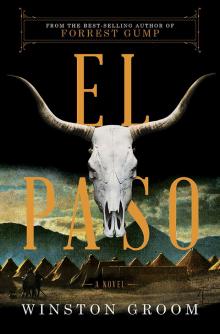 El Paso
El Paso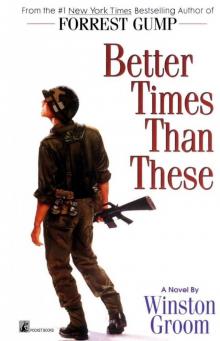 Better Times Than These
Better Times Than These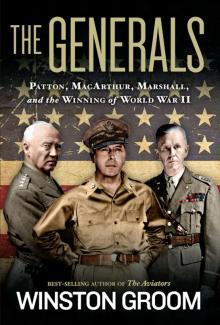 The Generals
The Generals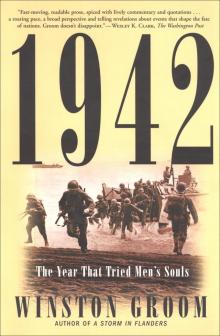 1942: The Year That Tried Men's Souls
1942: The Year That Tried Men's Souls Forrest Gump
Forrest Gump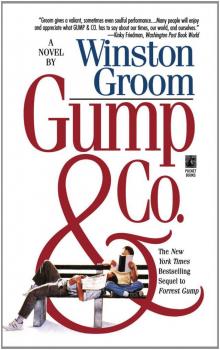 Gump and Co.
Gump and Co.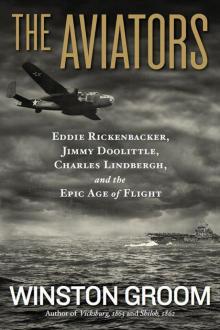 The Aviators
The Aviators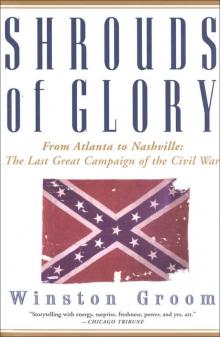 Shrouds of Glory
Shrouds of Glory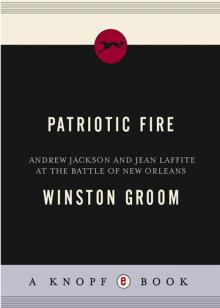 Patriotic Fire
Patriotic Fire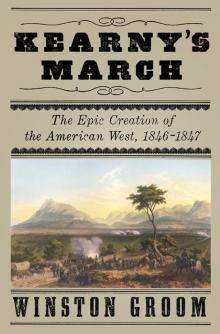 Kearny's March
Kearny's March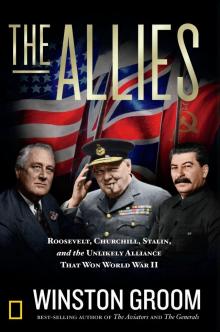 The Allies
The Allies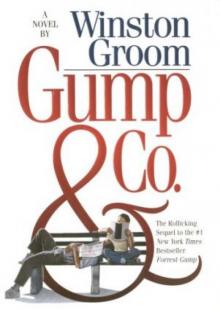 Gump & Company fg-2
Gump & Company fg-2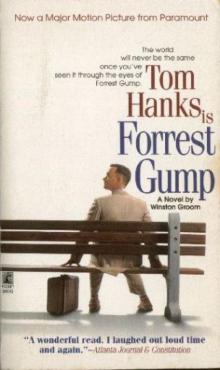 Forrest Gump fg-1
Forrest Gump fg-1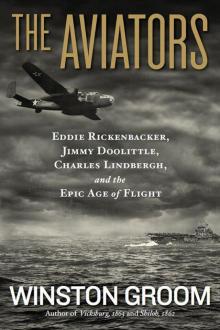 The Aviators: Eddie Rickenbacker, Jimmy Doolittle, Charles Lindbergh, and the Epic Age of Flight
The Aviators: Eddie Rickenbacker, Jimmy Doolittle, Charles Lindbergh, and the Epic Age of Flight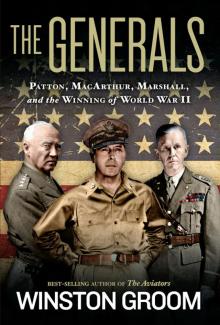 The Generals: Patton, MacArthur, Marshall, and the Winning of World War II
The Generals: Patton, MacArthur, Marshall, and the Winning of World War II